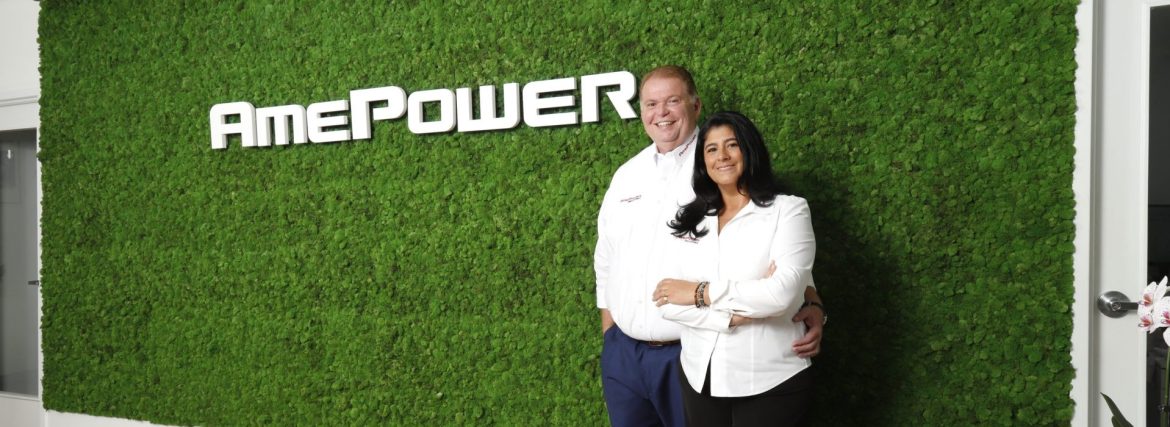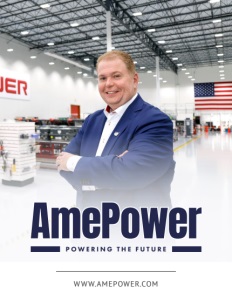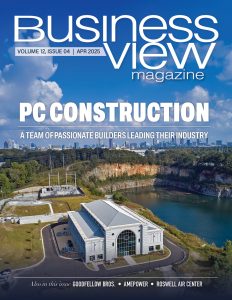Powering the Future
Discover how a Miami-based manufacturer brings advanced power electronics to trains and renewable energy.
In the rapidly evolving world of power electronics, Miami-based AmePower has carved out a distinctive position since its founding in 2002. The company specializes in high-power converters—sophisticated devices that transform AC power into DC or vice versa—with applications ranging from electric trains to renewable energy systems. Luis Contreras, CEO & Founder, explains their core expertise: “We work with high power converters. Our main business has been in Rolling Stock—everything from electric trains to diesel-electric locomotives.”
This niche focus has positioned AmePower as a valuable partner for major transit authorities across North America. “We’re helping different transit authorities like LA Metro, Boston, and New Jersey Transit keep up with their legacy fleet that are facing obsolescence issues,” Contreras notes. The company creates modern solutions that extend the life of existing transit infrastructure while developing new converter technologies for next-generation fleets.
Karina Doracio, President and Founder, emphasizes their unique market position: “We are a minority-owned, woman-owned business, and we comply with Buy America requirements, which is important for transit authorities.” This compliance gives AmePower a competitive edge when bidding on federally-funded infrastructure projects, which increasingly require domestic manufacturing.
Despite competing with industry giants like ABB, Alstom, and Siemens, AmePower has developed collaborative relationships with these larger firms. “In some cases, we work with competitors to maintain obsolete technology,” Contreras says. This cooperative approach demonstrates the value specialized expertise brings to the market, allowing AmePower to thrive in a highly technical sector traditionally dominated by multinational corporations.
From Trains to Renewable Energy and Beyond
While AmePower’s roots are firmly planted in railroad applications, its technology branches into numerous sectors where power conversion is essential. “The area where we work is really specific,” Contreras explains. “However, these converters aren’t only used for train traction, they’re applicable for any type of heavy machinery, military applications, solar farms, wind turbines, energy storage, even hydrogen production.”
This versatility positions AmePower at the center of multiple growth markets. The global power electronics market is projected to reach $51.9 billion by 2027, driven largely by electrification trends across transportation and energy sectors.
The company’s railroad expertise includes modernizing both passenger transit and freight applications. “We’re starting to work on hybrid conversions of diesel-electric freight locomotives,” Contreras notes. These massive engines traditionally use diesel generators to produce electricity for traction motors. “What we’ve been doing is offering those fleets the opportunity to convert diesel-electric trains into battery trains or use both diesel-electric and batteries together, and they are proving to be highly efficient – even surpassing industry standards by 49%.”
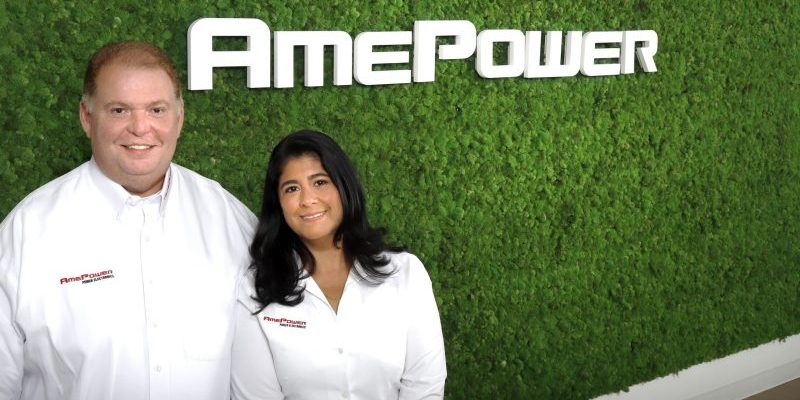
Such hybrid conversions deliver substantial environmental and economic benefits. “We’ve been able to reduce emissions significantly, and for train operators, it creates massive savings because most of their cost is from diesel fuel,” Contreras adds. With locomotive diesel consumption often exceeding 100,000 gallons annually per unit, these fuel savings can be substantial.
Beyond rail, AmePower has expanded into renewable energy infrastructure. “We’ve been working with wind turbines. The converter technology applies to solar inverters, EV chargers, energy storage, and hydrogen systems,” Contreras says. These markets span the entire country, defying regional stereotypes. “Not many people know that here in Florida there are a lot of solar farms. In the Midwest, there’s a lot of wind and solar farms being built right now. And we now have offshore wind turbines being placed outside the northeast U.S.”
Electrification Transformation
At the heart of electric vehicles and renewable power systems lies a crucial but often overlooked component: the power converter. Contreras offers a clear distinction between traditional transformers and the advanced converters AmePower develops: “A transformer is just metal with two types of coils that use electromagnetics to convert AC to AC. When we talk about converters, we’re discussing power electronics that use state-of-the-art components to build power from scratch.”
These sophisticated devices serve as the essential bridge between different electrical systems. “An EV charger is a clear example of a converter,” Contreras explains. “You have AC power from the grid that must be converted to DC to charge the car batteries.”
In transportation electrification, converters play an indispensable role beyond simple power transformation. They enable precise control of vehicle performance characteristics. “For trains, they normally take power from the third rail or overhead catenary as DC power and convert it to AC,” Contreras notes. “This allows control of motor speed to accelerate or brake the train, making it more comfortable for passengers. Otherwise, it would start from zero to full power at once rather than gradually.”
Similarly, renewable energy integration depends on power conversion technology. “You cannot connect a wind turbine directly to the grid because of oscillations and voltage spikes that would damage appliances,” Contreras points out. “Converters make the power clean and exactly the right voltage needed for equipment.”
The technical advantages of AmePower’s latest generation converters create significant practical benefits. “Our new generation of power converters is about ten times smaller than traditional units,” Contreras says. This miniaturization represents a major advantage across applications, allowing for more compact installations and simplified maintenance in everything from train systems to renewable energy infrastructure. Driving these technical advancements is AmePower’s Chief Technical Officer, Juan Muñoz. Muñoz’ approach consistently pushes the boundaries of what is achievable in the realm of high-power electronics design. “With products like UltraSine, we didn’t just want to improve existing technology — we set out to redefine it. We approached design from the ground up, questioning every assumption the industry had accepted for decades. That meant not only pushing the boundaries of performance and efficiency, but also rethinking how a high-impact solution could be scalable and manufacturable at volume. UltraSine is the result of that mindset — a product engineered for real-world reliability, ease of integration, and rapid deployment. It’s not just innovative in function, it’s a breakthrough in how we solve complex industry challenges with production-ready engineering”, shares Muñoz.
A Family-Oriented Culture in a Technical Field
Recruiting and retaining specialized talent poses a significant challenge in the competitive power electronics sector, where engineers with experience in high-power applications are in high demand. AmePower has developed a multi-faceted approach to building their technical team.
“It has been a mission,” acknowledges Doracio. “We have several alliances with universities here in Miami. Our HR department includes a specialist in recruiting, and we work every day to offer the best possible benefits, from health insurance to different perks that make employees and their families comfortable.”
Beyond compensation packages, AmePower emphasizes workplace culture as a key retention strategy. “Even though we have over 50 team members, our culture is family-oriented,” Doracio explains. “We treat each other as family, take care of each other, and maintain a really flat organization. We’re always accessible to all employees and provide opportunities for everyone to grow.”
Contreras addresses the technical training aspect: “From the technical perspective, it’s challenging because this is a specialized area that’s expanding worldwide. We obtain engineers mainly through internships and then guide them through specialized areas of power electronics training.” This grow-your-own approach allows AmePower to develop engineers with skills precisely matched to their specific technical needs.
The company’s environmental mission also serves as a powerful recruitment and retention tool. “It’s really motivating for employees, especially younger generations concerned about emissions impacting the planet,” Contreras notes. “If we mass-produce our hybrid locomotive technology, the CO2 reduction would be huge. We’re also helping transit authorities avoid scrapping older trains, preventing more waste and providing sustainable solutions.”
Facilities, Production, and Certification
AmePower’s 44,000-square-foot Miami facility houses a complete operation, from engineering design to final assembly and testing. This integrated approach gives the company tight control over their entire production process, critical for maintaining quality in high-power electrical systems where component failures can have significant consequences.
“We’ve invested in high-tech equipment for manufacturing and testing,” Contreras explains. “The software portion has been key because we’ve been preparing for mass production for several years.” This digital infrastructure supports their growth ambitions while maintaining rigorous quality standards.
This manufacturing platform integrates every aspect of operations. “We can control everything from administration to quality control. Assembly procedures, testing protocols, and generated reports for every unit are all in the same system,” Contreras notes. “We can track how many units we have materials to build, how many are being built, tested, or ready to ship—providing visibility to our customers.”
This level of transparency also covers warranty management and component tracking. “We can trace to the specific serial number of each component, not just the assembled unit,” Contreras adds. “This allows us to react quickly if needed.”
The company’s engineering capabilities incorporate advanced simulation and design tools essential for working with high-power electrical systems. “We have platforms for mechanical design, board design, and thermal simulations, which is key in this industry,” Contreras says. Thermal management is particularly critical in power electronics, where heat generation can significantly impact performance and reliability.
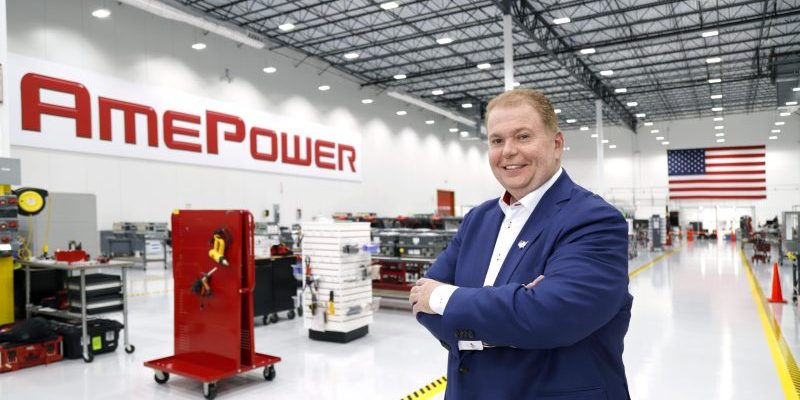
AmePower’s certifications provide additional competitive advantages in government contracting. “We have certifications as a Disadvantaged Business Enterprise (DBE), Minority Business Enterprise (MBE), and Women’s Business Enterprise (WBE),” Doracio points out. These designations, increasingly important in public infrastructure projects, reflect diversity requirements in government procurement processes.
MADE IN AMERICA / BUY AMERICA COMPLIANCE AND NATIONAL RECOGNITION
AmePower’s domestic manufacturing aligns perfectly with increasing government requirements for U.S.-made components in infrastructure projects. “Everything is done in-house,” Contreras emphasizes, giving the company a significant advantage when bidding on public contracts.
“Our products are Made In America, and we comply with Buy America requirements, which is important for several transit authorities,” Doracio notes. These provisions, which have been strengthened in recent years, require federally-funded infrastructure projects to use American-made products when available. For transit agencies and other public entities using federal grants, working with Buy America compliant suppliers like AmePower simplifies procurement.
This domestic manufacturing focus provides benefits beyond contract eligibility. “Security-wise, it’s something the federal government values—that the intellectual property remains here and protected,” Doracio adds. In critical infrastructure applications like public transportation and renewable energy, protecting technology from potential foreign interference has become an increasing priority.
The company’s adherence to these standards, combined with technical expertise, has earned significant recognition. “In 2023, we were recognized at the White House by the president and by the Small Business Administration as Small Business of the Year for Florida,” Contreras proudly shares. “We were also named Supplier of the Year by Siemens, which was a really big deal.”
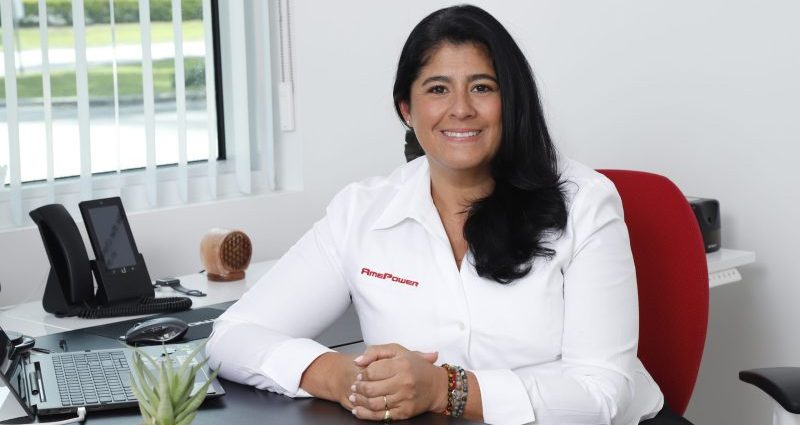
These accolades show AmePower’s unique position in the market: small enough to qualify for small business programs yet sophisticated enough to supply major multinational corporations and government agencies with critical components. Their recognition by Siemens is particularly notable, as the German industrial giant is itself one of the world’s largest manufacturers of power electronics and train systems.
Mass Production and Green Innovation
After two decades of development, AmePower has positioned itself for significant expansion. The new generation of power converters—more compact and versatile than traditional designs—forms the cornerstone of its growth strategy.
“Now that we’ve developed a highly compact unit, our top focus is to start mass producing and expand beyond the train sector,” Contreras explains. “We want to make it viable for other sectors as well.” This cross-industry approach leverages this core technology across multiple applications, maximizing return on research and development investments.
The expansion plans include workforce growth and complementary product development. “Our growth will concentrate on hiring more people and developing some complementary solutions that are needed,” Contreras notes. “Then we’ll go after different market sectors. It’s ambitious for a company our size, but we believe we’re at the perfect moment to apply what we’ve developed to all these needs.”
This vision includes environmental impact. “One of our main goals is to continue our innovation and technology toward a greener world,” Doracio shares. “Our contribution to lowering emissions will be our dream come true.” This environmental mission resonates with employees and customers, adding purpose to AmePower’s technical work.
The power electronics industry has evolved considerably since AmePower’s founding, with applications expanding dramatically in recent years. “It’s just in the last decade where we’ve seen that expansion to different applications—from electric vehicles to hydrogen, wind, and solar,” Contreras observes. “It’s that vision of anticipating growth that pushed us to make the investments we have now.”
As electrification accelerates across transportation and energy sectors, AmePower’s specialized expertise and American manufacturing approach position them well for their next chapter of growth—bringing advanced power conversion technology to markets eager for innovative solutions to technical and environmental challenges.
AT A GLANCE
Who: AmePower
What: Designer and manufacturer of high-power converters for transportation, renewable energy applications, EV fleet & chargers, defense, and more.
Where: Miami, Florida
Website: www.amepower.com
PREFERRED VENDORS/PARTNERS
![]()
Infineon Technologies AG is a global semiconductor leader in power systems and IoT. Infineon drives decarbonization and digitalization with its products and solutions. The Company had around 58,060 employees worldwide and generated revenue of about €15 billion in the 2024 fiscal year. Infineon is listed on the Frankfurt Stock Exchange (ticker symbol: IFX) and in the USA on the OTCQX International over-the-counter market (ticker symbol: IFNNY)
Infineon Technologies Americas Corp.: www.infineon.com
